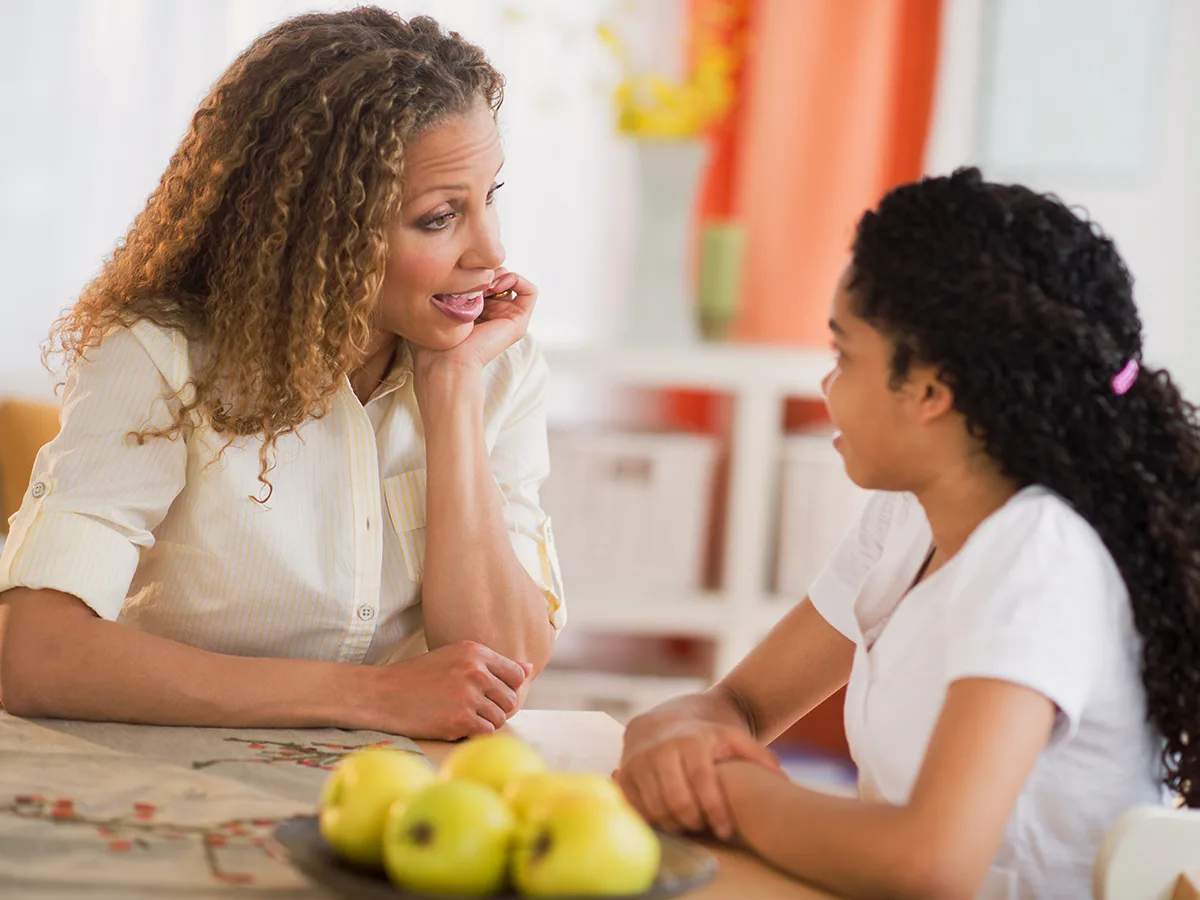The difference between discipline and punishment
Are discipline and punishment the same thing? People often use the terms to mean the same thing. But discipline and punishment are different. Both teach kids to follow rules, but only one teaches kids how to correct their misbehavior.
Punishment aims to stop the behavior
Punishment is a form of negative discipline. It’s often used to get rid of or end a behavior.
When kids push your buttons or disobey rules, you may be quick to give them a consequence that’s going to make them unhappy enough to stop what they’re doing. It’s a common response when you feel frustrated, angry, or just plain fed up. But it’s not likely to change kids’ behavior in the long term.
Positive discipline aims to correct the behavior
Positive discipline discourages misbehavior. But it also teaches kids expectations and accountability. It helps kids see that there’s a connection between what they do and what happens next — the natural and logical consequences.
These are sometimes called corrective consequences. They help kids learn to correct their behavior. This kind of positive guidance works just as quickly as punishment. And it can be more effective than punishment.
Punishment versus discipline
Consider this scenario: Sandra and Javier have been arguing over colored pencils all afternoon. One of them pushes the other, and they both start yelling. You might say, “Both of you, stop it! You’re not allowed to go outside today!”
That’s punishment. It may stop the behavior in the moment, but it’s not going to teach Sandra and Javier the skills they need the next time they argue.
When you use positive discipline, you might say, “Give me the colored pencils. Neither of you can use them right now. Sandra, take a deep breath. Now use the ‘I statements’ we practiced yesterday to tell Javier why you’re upset.” With positive discipline, you’ve taught Sandra and Javier how to respond next time — and any time a disagreement comes up.
Use this comparison chart to learn more about punishment versus discipline.
| Negative discipline/punishment | Positive discipline/corrective consequence |
|---|---|---|
What it is | • A penalty for doing something wrong. It tries to change kids’ future behavior by making them “pay for their mistakes” • A reactive approach that handles the situation in the moment | • A logical or natural consequence for wrongdoing. It aims to change future behavior by helping kids learn from their mistakes • A proactive approach that handles the situation in the moment and teaches skills for the future |
Power dynamics | • Puts adults in control of kids’ behavior and for deciding the outcome of their decisions | • Puts kids in control of their behavior and decisions by teaching new skills, such as self-control and self-regulation |
Assumptions and guidance | • Assumes that behavior is only about doing something “bad” or “wrong” • Provides little help figuring out how to behave differently in the future | • Assumes that behavior is a form of communication • Provides help in learning how to behave differently in the future |
Types of consequences | • Negative consequences aren’t directly tied to what happened, such as: • Taking away privileges or possessions • Making kids do an unpleasant task • Adding more responsibilities or work • In some homes, corporal punishment (Research shows that corporal punishment can increase aggression and other negative behavior.) | • Corrective consequences meet the “three R’s”: Reasonable Related to the problem Resulting from the behavior or action • There are two types of corrective consequences: Natural consequences are the unavoidable and inevitable result of an action. Logical consequences are also related to the action. But they’re given out when you intervene because the action could result in someone getting hurt or harmed. |
Examples of consequences | Negative consequences: • Sandra was chatting with her friend during silent reading time, so the teacher makes her stay inside for recess. • Javier skateboarded in the road after he was told not to. His mom tells him he has to do his brother’s chores for a week in addition to his own. | Natural consequences: • Sandra was chatting with her friend during silent reading time, so now she’s behind in her book. Her mom points out that she will have to miss her favorite TV show at home because she has to read for longer than usual. Logical consequences: • Javier skateboarded in the road after he was told not to. Her mom points out that since he made the choice to not follow the rules, he isn’t allowed to use his skateboard for the rest of the week. |
What kids learn from this | The message is: “You need to stop doing that; it’s wrong.” Kids learn: • Their behavior needs to be managed by you. • They need to be careful not to get caught if they want to avoid dealing with the consequences. | The message is: “Here’s what you can or should do instead.” Kids learn: • They can manage their own behavior through self-control. • They need to make changes to their behavior if they want to avoid dealing with the consequences. |
Results | • Negative self-esteem • Increased power struggles • Fear and resentment between you • Lowered academic achievement | • Positive self-esteem • Decreased power struggles • Better relationships between you • Increased academic achievement |
More resources
You may not always respond to behavior as well as you’d like to, especially in stressful moments. But you can always make changes. These resources can help:
Explore a guide to understanding behavior as a form of communication.
Read one family’s story of how they got back on track after years of mismanaging meltdowns.






